One of the most ‘looked-forward-to’ part of our China trip was the travel by bullet train or HSR (High Speed Railway) as it is called here. Armed with our tickets booked well in advance, reached the Beijing West station in the morning. As are most buildings in China, this one too is a mammoth structure.
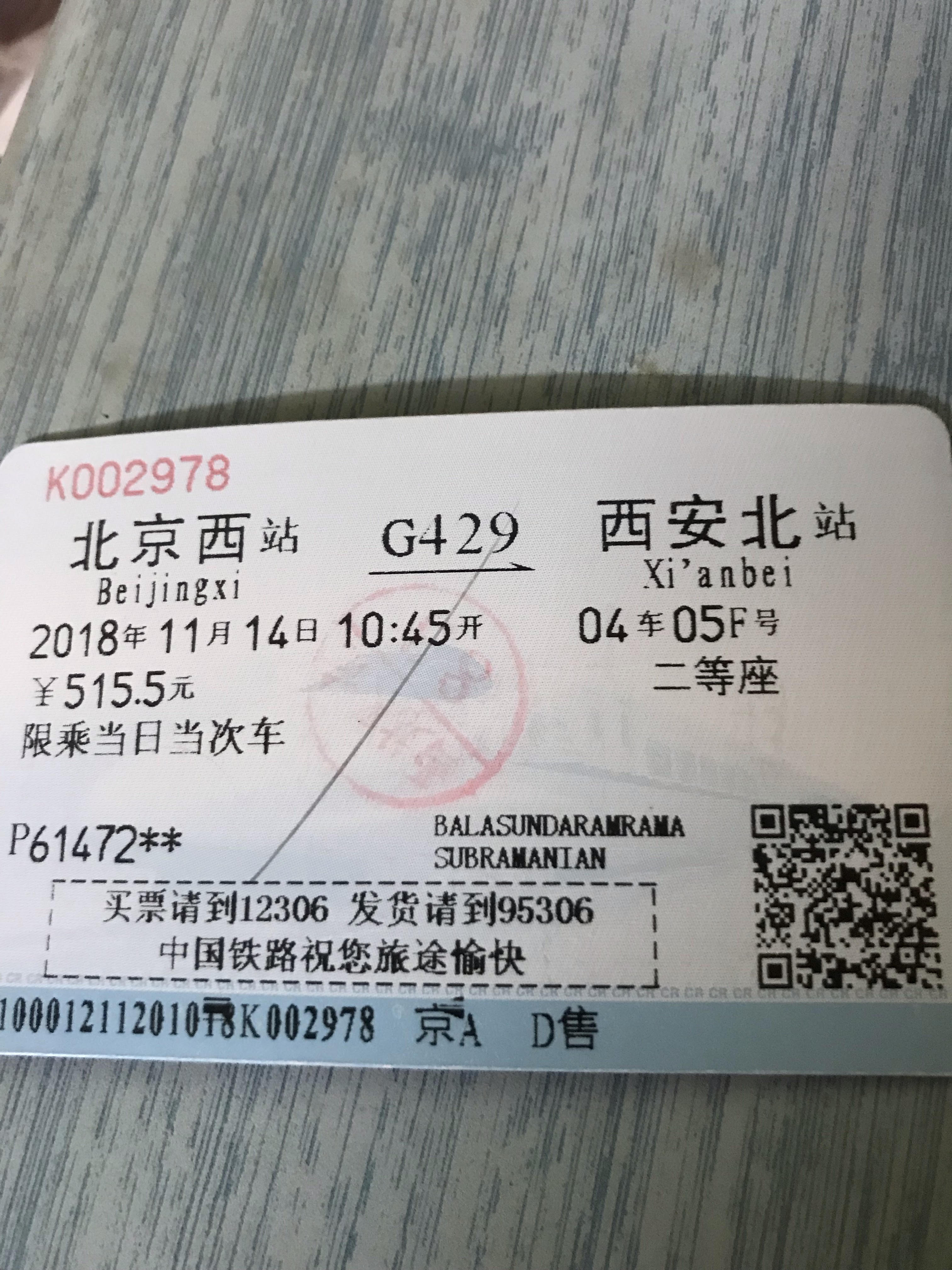
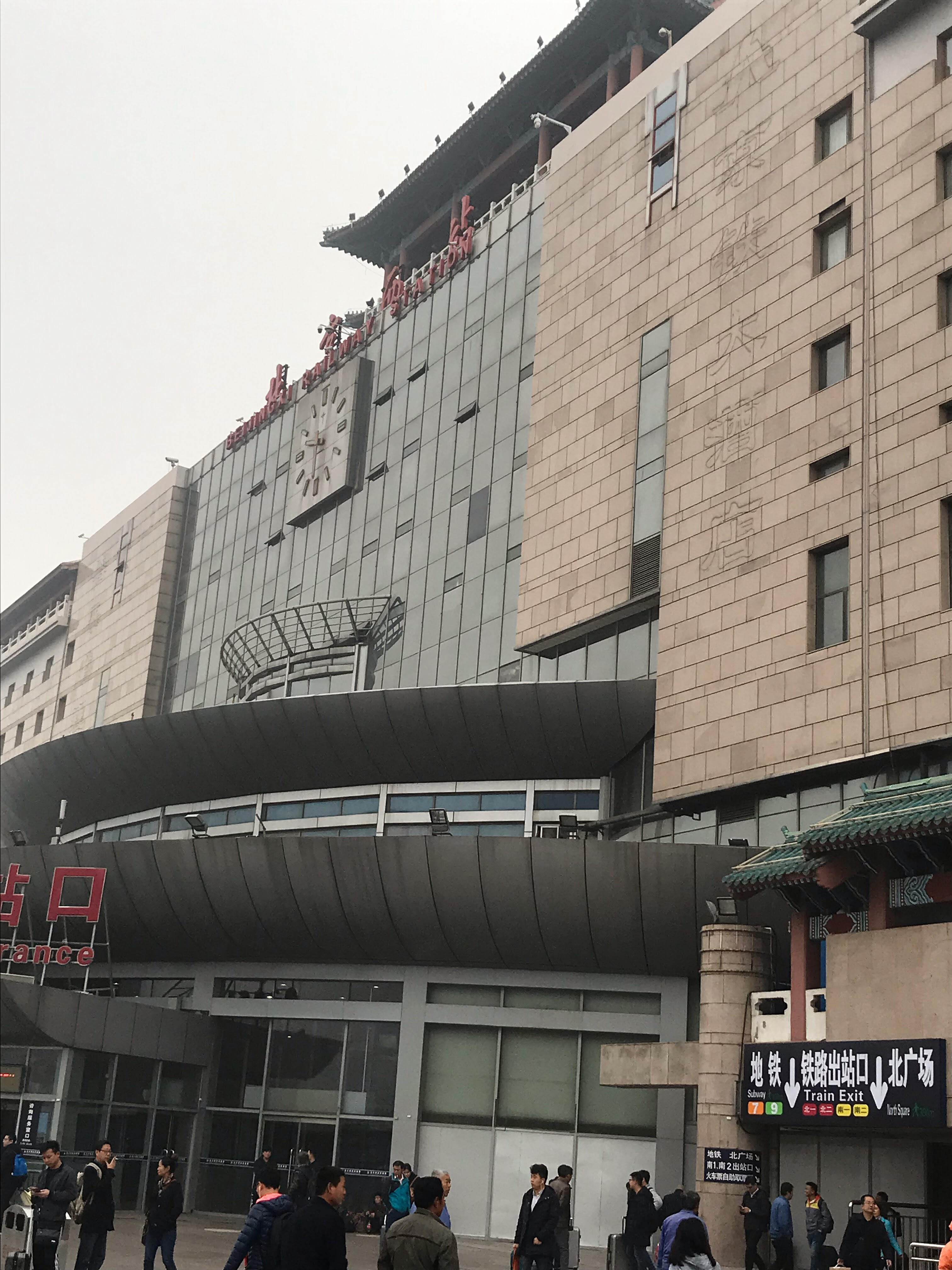
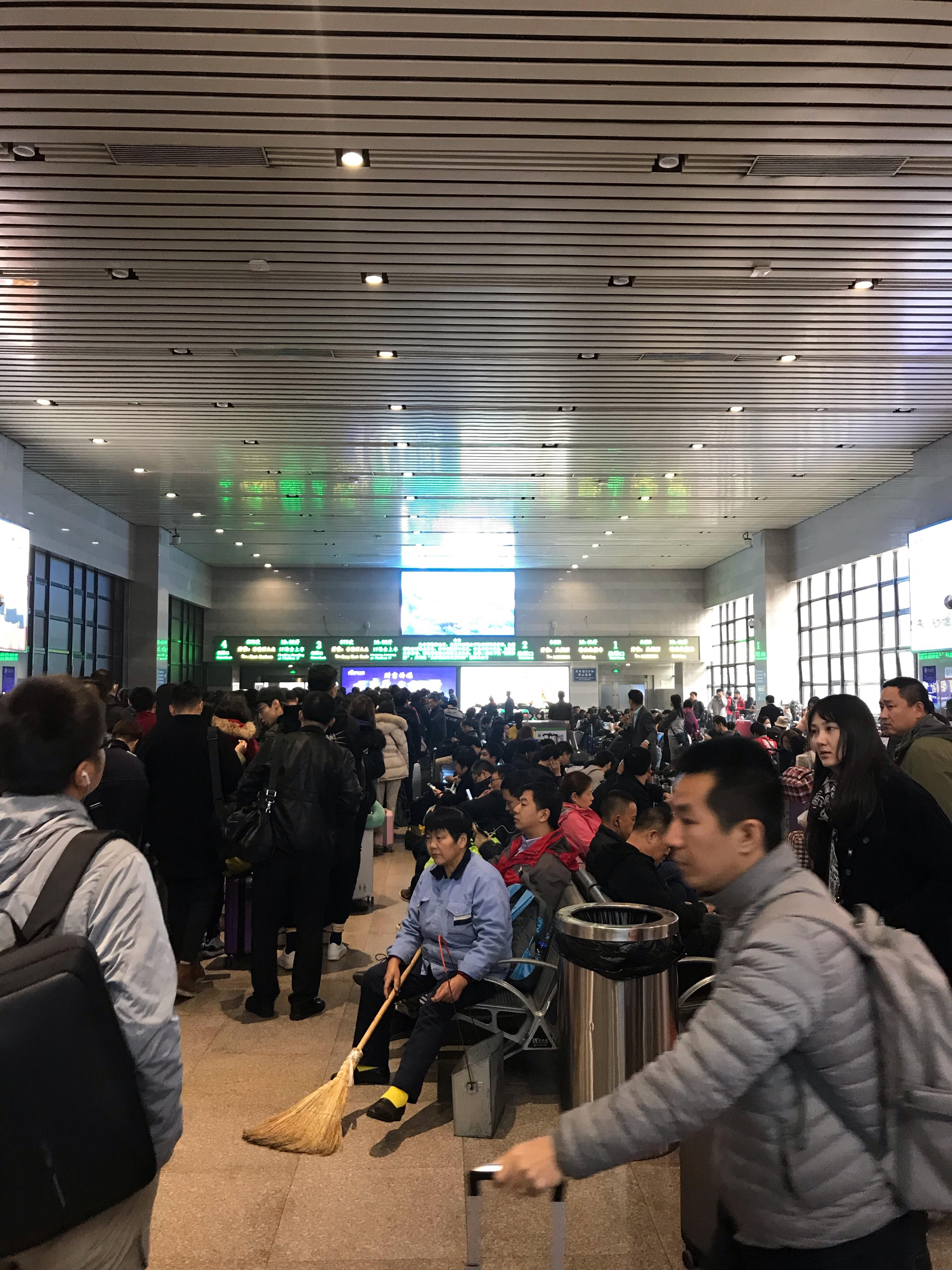
Quickly learnt the Mandarin words for directions — East, West , North & South equating to Dong, Xi, Bei & Nan. Hence Beijing xi meant Beijing West while Xi’an bei stood for Xi’an North. The lady at the check-in counter asked for our passports, checked our tickets on the system and we were through now to the baggage security check. Cleared quickly, we figured out the waiting room for our train( there are multiple waiting rooms) and plonked into our chairs and observed the crowds. The waiting room was large and had stalls selling food, souvenirs, books, etc. on both sides. Well-maintained toilets too were provided along with mobile-charging points. Free wi-fi was available but weak.
The boarding gates were opened 15 minutes before departure and then we quickly passed the turnstiles and riding an escalator were down on the platform where G429 was waiting for us. The platform, or rather all platforms do not have any stalls or any structures and is devoid of people except at the time of boarding/disembarking.
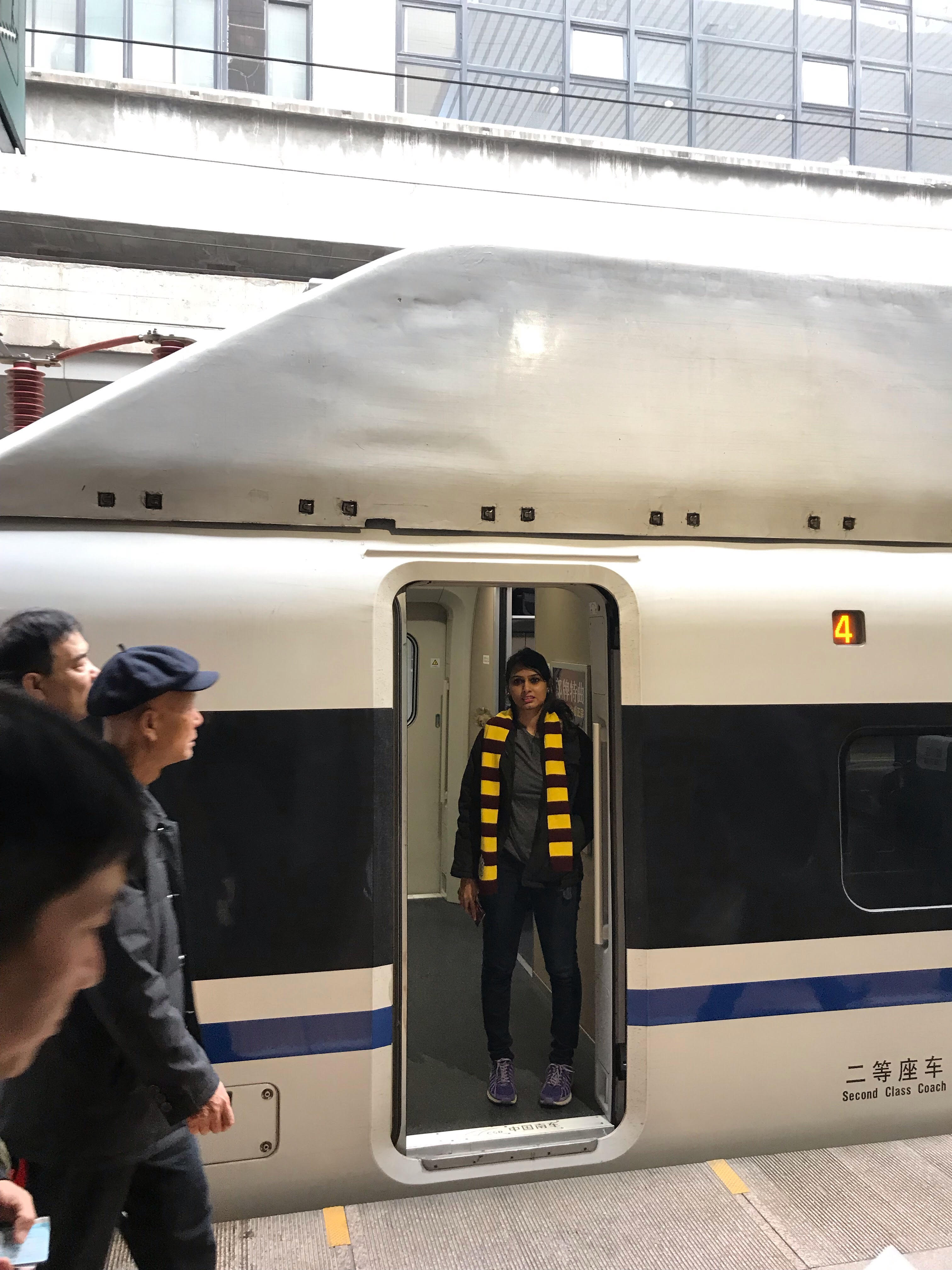
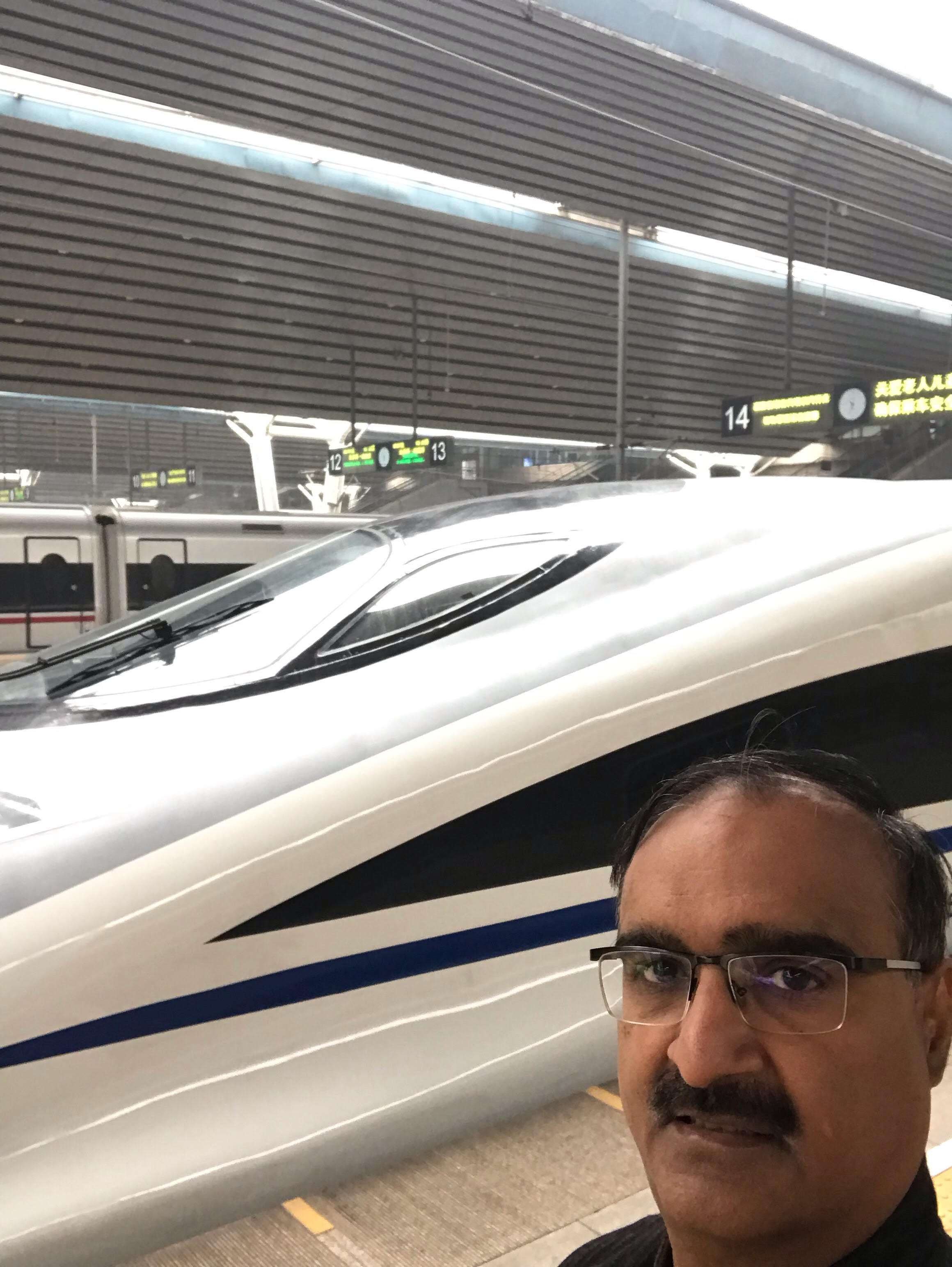
The train had 8 coaches with vestibule (a solid one, that one never felt we were walking from one coach to another). We traveled second class, where the seats were like those in commercial aircraft but with abundant legroom. Five seats to a row, three on one side and two on the other. Business and first classes were more luxurious with leather seats and seats which could convert to beds.Overhead racks for normal luggage and for the slightly larger ones, there are storage places at the ends of each coach.
Bang on the dot at 10.45 AM, the train pulled out of the station and very quickly accelerated to 150,155,175,200,…..220,225,250 kilometers per hour, with the speed flashing on the screen inside the coach.Most of the route was on dedicated, elevated, ballast-free tracks. The highest speed we touched was 307 kilometers per hour. We checked at every station we halted( around nine of them) and not once were we even a minute late. Kudos for their time management, safely. comfort & cleanliness.. Each coach had a uniformed conductor who checked tickets, took care of overall security and announced the arrival at each station in addition to the recorded announcement. The loud, yet musical announcements ” Zhengzou dong tavala, Luyoyang Longmen tavala” still echoes in my ears where ‘tavala’, (I understood from my daughter who speaks a smattering of Mandarin) stands for ‘arrived’. In addition there was a cleaner who repeatedly kept mopping the floor with disinfectants and replacing the paper bags in each seat meant for dumping waste.

Even as were crossing 300 kilometers per hour, one did not feel the speed as there were no violent movements, it was so smooth and effortless. We passed major cities like Zhengzou and places of historical interest like Luoyang Longmen and numerous small villages, towns, but honestly, the scenery was nothing great as there was a huge shroud of grey smog all through. We were now moving up mountains and passing through a series of tunnels, some of them as long as 15-20 kilometers. Any tunnel longer than 10 kilometers is classified as a ‘super-long’ tunnel and there were plenty of them. Did the train slow down in these tunnels? Not at all. Time for lunch. The food trolley from the pantry car pushed by a colorfully attired waitress came along. I noticed a few people buying from her and surprisingly, all of them made use of their mobile-pay facility only — either WeChatpay or Alipay. Most of them had carried their own lunch, mainly cup noodles, fruits and buns. We too had our own food stuff. Every coach has a facility for hot water and we used it to make our two-minute noodles ( Maggi from India, by the way). Each coach has two toilets, sparkling clean– one a western style toilet & the other an Indian ( or Chinese) squat-toilet.
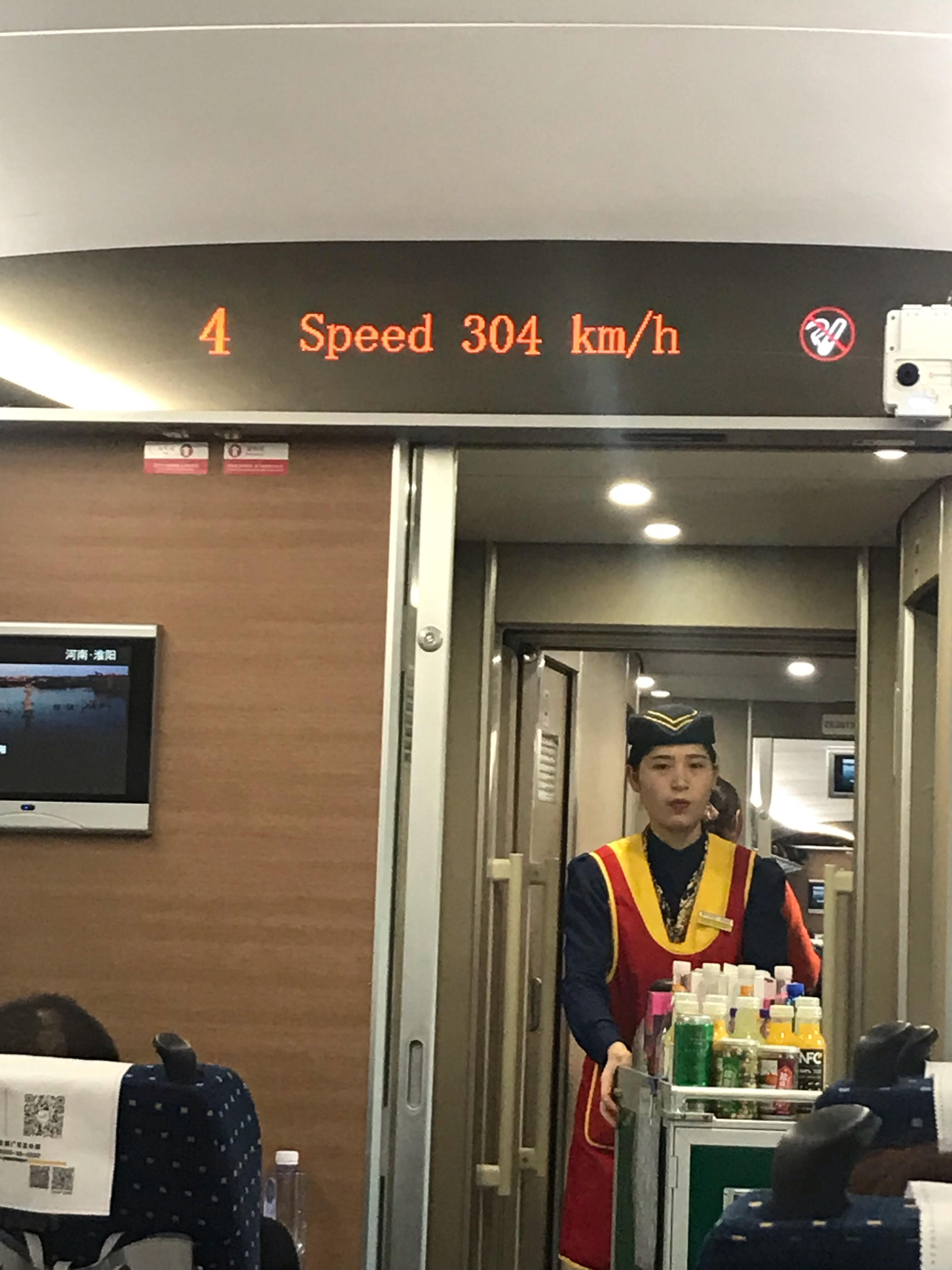
The train was slowing down now. Looked at my watch, it showed 4.20 PM. Three minutes later at 4.23, the announcement came ” Xi’an bei tavala”. Time to get off, bang on time and fresh as a lily. We had traversed 1216 kilometers in 5 hours and thirty eight minutes. To put matters in perspective, the distance between Mumbai and Chennai by rail is 1296 kilometers and the fastest train takes 24 hours. Mind you, ours was not the fastest train between Beijing & Xi’an, there’s another one which does the distance in four and a half hours. Phew!
How do they manage these speeds? Dedicated, elevated tracks. Learnt that 84% of the distance we traveled was on elevated tracks and through tunnels. St aright tracks as far as possible, no veering bends even in the mountain section. They have sliced through mountains rather than go round them even where possible. Hence, the increased number of tunnels and long ones, at that. China today has the largest high-speed railway network in the world and it covers a majority of the provinces.
In India, the first bullet train between Mumbai and Ahmedabad is in the foetal stage. I was one of those who wondered , if the enormous cost was worth it and whether the money could be gainfully used to modernize the existing railway network. After experiencing the High-speed train, I can forcefully say that a dedicated network of such trains would transform India. Imagine Mumbai to Ahmedabad in 2 hours or Chennai to Bengaluru in one and a half hours! It would be a phenomenal transformation.
Discover more from BalasBroadcast
Subscribe to get the latest posts sent to your email.
Terrific photos–thanks for sharing!
I wish India can see such bullets train soon…